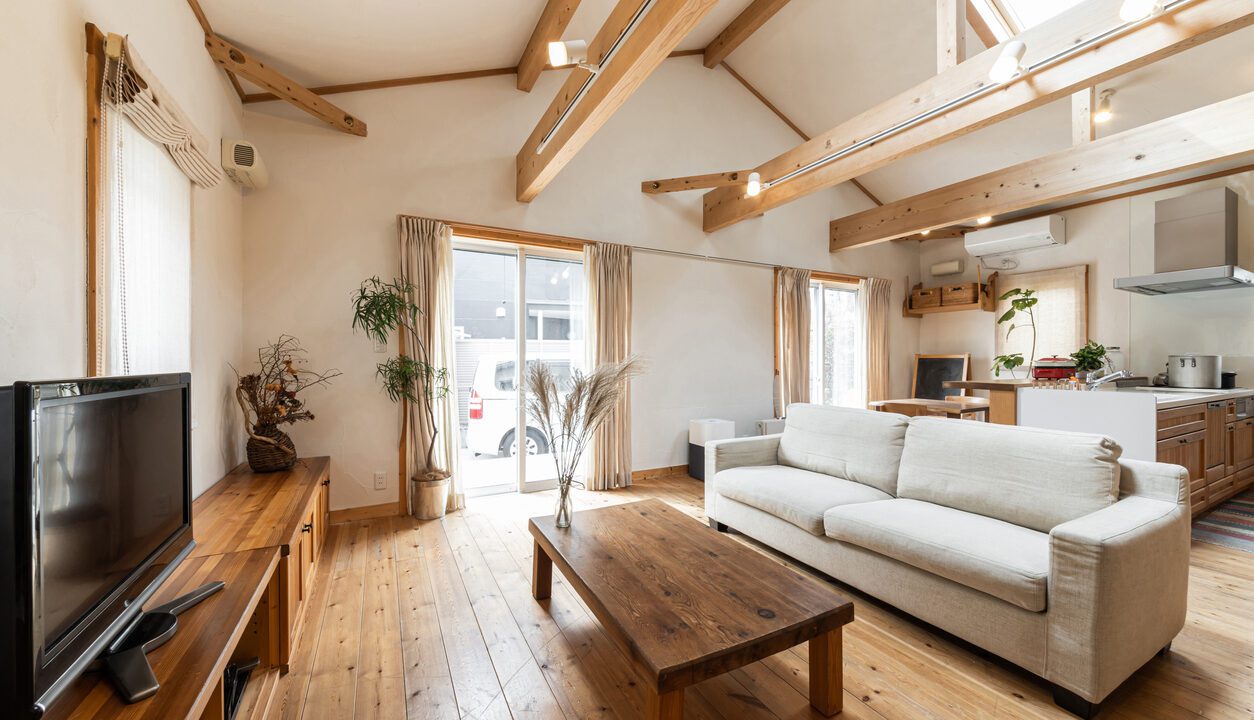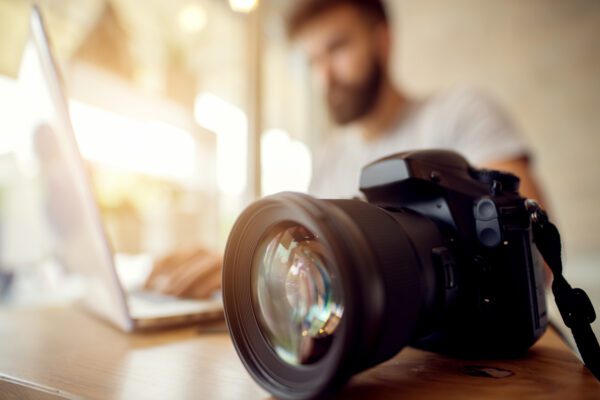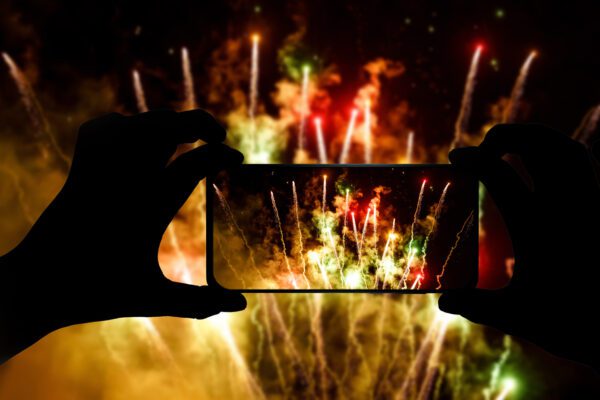Think you need the latest gear to produce great real estate photography? Not so much. Many pros say that quality images can be captured with relatively modest equipment if you know what to use and how to use them.
Nonetheless, the best gear will certainly add flavor and some “kick” to your images.
So what are the best tools for the job? Here’s a rundown of our top five picks.
Our Top 5 Best Gear for Real Estate Photography
- Canon 1Dx Mark III DSLR Camera (our top pick)
- SIRUI AM-223 Carbon Fiber Tripod (best budget)
- DJI Mini 3 Pro Drone (best high-end)
- Neewer TT560 Flash Speedlite
- JJC Intervalometer Timer Remote Control Shutter
What Is the Best Gear for Real Estate Photography?
The best gear for any real estate photography is a solid, intuitive camera that can manage any lighting situation with excellent accuracy and precision – even with high ISOs. These features are available in the Canon 1DX Mark III DSLR.
Launched in 2020, this product was the last of its kind for Canon and is a top-of-the-line choice for photographers who want the best of everything. Here’s why:
- It is rugged and built like a tank. This DSLR camera is almost built to last. You can take it anywhere, even in hot, humid, and freezing temperatures. Even if you drop it, it will still work. It’s splash, dust, and raindrop resistant. The shutter life? A whopping 500,000 actuations, one of the highest in the world.
- It has a large sensor. With a 20-megapixel full-frame sensor, the 1DX Mark III gives you a high-quality image with every shot, even in poor or low-lighting conditions. Your real estate photos will still look stunning even at ISO 3200.
- The camera uses deep learning. The 1DX Mark III uses deep learning algorithms to identify things. Its DIGIC 8 processor works closely with the autofocus function. This way, you can be sure that your subject is always in focus, no matter what the scene is.
The Canon 1DX Mark III also goes well with several of the best types of gear on the list, which we will review in a bit. Overall, it is a powerful, versatile camera that will help you capture stunning real estate photos no matter the situation.

What Are the Different Types of Gear for Real Estate Photography?
Real estate photography can be a one-man job. However, no photographer will ever produce the perfect quality image without the gear kit, which includes the following:
1. Camera
No camera, no photography — it’s that simple. This tool, which has undergone significant innovations since 1816, helps capture the details of a property, highlighting its features and making it more appealing to potential buyers.
Different types of cameras can work in real estate photography. Your choice depends on your budget, style, personal preference, and desired outcome.
- DSLRs: Digital single-lens reflex cameras use a mirror system to direct light from the lens to the viewfinder. They are popular among professional and semi-professional photographers because they offer high-image quality and flexibility in terms of interchangeable lenses and other accessories. They also often have large sensors, resulting in greater detail and dynamic range. Furthermore, they possess fast autofocus systems and advanced features such as RAW image capture.
- Mirrorless Cameras: As the name suggests, mirrorless cameras don’t have a reflex mirror. Instead, they send light directly to the image sensor, which results in smaller body size. In other words, they are lighter and more portable than DSLRs, but their image qualities are already comparable.
- Point-and-Shoot Cameras: This gear is simple and easy to use, ideal for beginners and hobbyists. They are typically small and lightweight. However, point-and-shoot cameras generally have smaller sensors and fewer manual controls. You cannot adjust settings such as ISO, aperture, and shutter speed.
2. Drones
Drones are unmanned aerial vehicles that are controlled remotely. For many years, the military has used them for surveillance and reconnaissance missions.
At present, drones are now becoming increasingly popular among civilians. Real estate photographers use them to capture aerial shots of properties that would otherwise be inaccessible, such as roofs and chimneys. This bird’s-eye perspective offers a better sense of the area’s layout and location.
Moreover, drones equipped with high-quality cameras can produce stunning images and videos. They can help highlight a property’s best features and provide more unique, engaging angles to help photos stand out.
3. Tripod
A tripod is a support device typically used to stabilize a camera or another imaging device by spreading out the weight of the gear and keeping it balanced on three legs. They usually have a platform or head on top of the legs that allow the user to pan and tilt the camera and adjust its position.
Tripods are often used in low-light situations or when taking long-exposure photographs. They prevent camera shake and allow for smooth, steady shots. This is especially important in real estate photography, where detail and sharpness are essential.
4. Camera Flash
A camera flash is a device that produces short bursts of artificial light through a discharge of flash powder or electronic flash. Most modern cameras have built-in flash, which are automatically triggered when the camera is used in low-light conditions.
Real estate photographers, however, rely on external flashes because:
- They offer more power and flexibility.
- You can attach them to the camera or mount them on a stand.
- You can direct them at different angles to produce the desired lighting effect.
- External flashes are especially useful for illuminating dark rooms or highlighting specific features of a property.
- They can also reduce glare from windows.
5. Intervalometer
An intervalometer is a device that lets you take a series of photographs at set intervals, hence the name. It can be used to capture time-lapse videos or sequences of images that will be composed into a composite photo.
This type of gear can be beneficial for real estate photography, especially when trying to capture the progress of construction projects or the changing seasons. You can also use an intervalometer to reduce camera shake. The less camera shake, the sharper the photo is.
How Does Gear for Real Estate Photography Work?
Real estate photography isn’t just about taking pictures of the building (interior and exterior). It also involves scale, landscape, and action. It might even cover human interest and brand storytelling.
To make it truly work, you have to use various tools — and this is where the different types of gear come in. Let us illustrate how they can all work together for a particular project.
For example, say you’re hired to take photos of a new office property. The first thing you’ll need to do is to take some shots of the exterior.
For this, you’ll likely use a DSLR or mirrorless camera with a wide-angle lens. This will allow you to capture the entire façade of the building in one frame. You might also use a tripod to keep your camera steady and avoid camera shake.
If you want to get a shot of the entire building and its surroundings, you could use a drone. This will give you a bird’s-eye view that would otherwise be impossible to get.
Once you have your exterior shots, it’s time to move inside. You have two options here.
- Use your flash (artificial lighting).
- Use your tripod + intervalometer (natural lighting).
To show off the interior space, use a wide-angle lens (our preferred way) or a fisheye lens. This way, you can capture more of the room in one frame and show off its features. A 20-24mm lens will do but we recommend using a 12-14mm rectilinear lens.
Finally, you might also want to take some shots of the people who work in the building. This could be employees working at their desks or meeting in a conference room. For this, you’ll want to use a portrait lens or even a telephoto lens to get close to your subjects and capture their expressions.
As you can see, a lot of gear goes into real estate photography. And each type of gear has its purpose, but they can all work together to achieve your goal.
What Do You Look for in the Best Gear for Real Estate Photography?
While the types of gear above are certified must-haves for real estate photographers, you don’t need to buy all of them at once. You can also invest in other tools, such as lenses. These factors can help you decide the best items to buy:
- Cost: The cost of the gear will be a factor in your decision. Price points can widely vary, and not all cheap ones are of inferior quality. Consider the others on this list when evaluating your options.
- Brand: You don’t necessarily need to stick to one brand, but it can be helpful. Canon, for example, already has an ecosystem of lenses, flashes, and accessories that all work together. The company also provides better customer or after-sales support.
- Quality: Quality can refer to features, image quality, build, sharpness, and more. Consider the sensor size, pixel quality, low-light performance, and autofocus system of the cameras.
- Compatibility: This is especially important if you’re using multiple brands. You’ll want to ensure your gear can work together without any issues. For example, some flash and lenses only work with certain types of cameras.
- Ease of Use: Real estate photography requires you to be in different places, even in challenging terrains. The best types of gear are those that are easy to carry, set up, and use.

Best Gear for Real Estate Photography Reviewed
1. Canon 1Dx Mark III
The Canon EOS-1D X Mark III is a compelling DSLR camera perfect for stunning real estate photo shoots. The camera’s high-quality CMOS sensor, when paired with the DIGIC X image processor, provides impressive image quality and speed, giving you detailed, sharp photos and videos with ease. The camera also features a robust build quality and a broad native sensitivity range for various lighting conditions. High-ISO performance is top-notch.
Pros
- Impressive image quality
- Adaptability to different lighting conditions
- Clean photos at high ISOs
- Excellent autofocus system
- Rugged and battle-ready
Cons
- Heavy
- Limited customization choices
- Expensive
2. SIRUI AM-223 Carbon Fiber Tripod
The SIRUI AM-223 Carbon Fiber Tripod is an excellent real estate photography tripod for anyone looking for a lightweight and portable option. Its rubberized ring and foot grips provide enhanced stability. The tripod is also rugged, making it an excellent option for those who are careless on their equipment.
Pros
- Lightweight and portable
- Rugged
- Affordable
- Load capacity is 33 lb
Cons
- The legs come only with 3 sections
- Its ball head needs getting used to
3. DJI Mini 3 Pro
The DJI Mini 3 Pro is a great little drone for hobbyists and professional real estate photographers. It is easy to use and has many great features, such as 4K/60fps video recording and 48MP RAW photos. It also has a built-in gimbal, allowing you to take great portrait shots. The drone also has a flight time of up to 34 minutes, which means you can explore more of your surroundings.
Pros
- Safe to use even in complicated environments
- High-quality images and videos
- Long flight time
Cons
- Pricey
- Fixed aperture
4. Neewer TT560 Flash Speedlite
The Neewer TT560 Flash Speedlite is perfect for anyone who wants consistent, reliable lighting in any situation. With a vertical rotation angle of 0-90 degrees and a horizontal rotation angle of 0-270 degrees, you can easily adjust the light to your needs. Plus, with eight steps of power output control, you can quickly finetune the brightness to match your scene. This flash also features a built-in LCD display and five slave modes, making it an excellent pair for almost any camera on the market.
Pros
- Versatile
- Various customization choices
- Bright
Cons
- Poor recycle time
- Mounting and battery chamber issues
5. JJC Intervalometer Timer Remote Control Shutter
The JJC Intervalometer Timer Remote Control Shutter is an excellent tool for real estate photography. Its compact size, remote controller with an accompanying long wire, and exposure-count setting features make it easy to use and take great photos without camera shake. The timer can be set anywhere from 1 second to 99 hours, 59 minutes, 59 seconds, making it perfect for real estate photography. The backlight design also allows you to view the LCD screen in the dark.
Pros
- Compact and easy to use
- Flexible timer setting
- Can be used in the dark
Cons
- May not work with all cameras
- The display is a bit small
Final Thoughts on Gear for Real Estate Photography
Real estate photography is great for showing off properties and capturing attention. But to do it well, you need the right gear. The five items reviewed here are some of the best on the market and should help you take your real estate photography to the next level — with the added flavor and “kick.” Choose the right ones for your needs and budget, and you’ll be sure to take amazing photos that will wow your clients.



